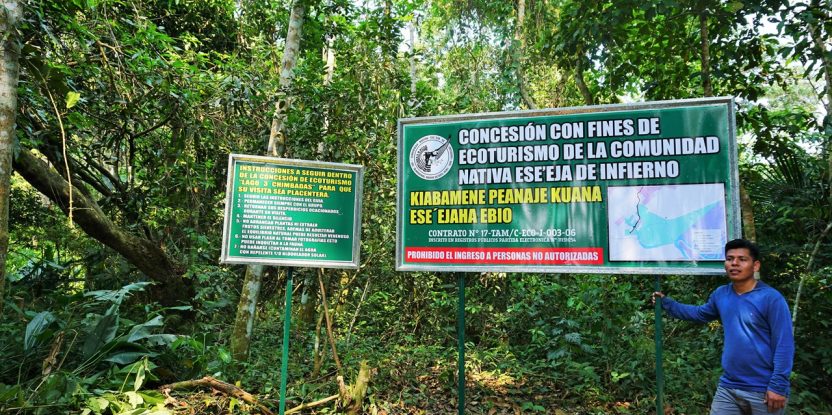
In our Infobrief, Lessons from early REDD+ initiatives to inform effective and equitable carbon mitigation efforts in Peru, we summarised lessons gleaned from analysing more than 10 years’ implementation of two sub-national REDD+ projects in Peru.
We hope these lessons will be used by policymakers to enhance the effectiveness, and the equity, of some of the actions adopted by the country under its nationally determined contribution (NDC) to reducing emissions of greenhouse gases. More than half of the greenhouse gases emitted in Peru come from the expansion or establishment of new agricultural areas.
In the update of its NDC to the Paris Agreement, Peru agreed to unconditionally reduce emissions by 30% by 2030 and by an extra 10% conditional on international support. To meet these commitments, Reducing Emissions from Deforestation and Forest Degradation (REDD+) initiatives must be implemented that guarantee effective and equitable outcomes.
The Government has, accordingly, put emphasis on eight REDD+ efforts: 1) sustainable agricultural production (zero deforestation); 2) sustainable forest management; 3) mitigation and adaptation in indigenous, Andean and coastal communities; 4) community forest management; 5) forest conservation in native and peasant communities; 6) titling, oversight and governance in native and peasant communities, with community monitoring; 7) strengthening of conservation areas; and 8) afforestation, reforestation and restoration.
We noted that there had been around 35 early REDD+ initiatives in the Peruvian Amazon since 2008, so, knowing the true impact of at least some of them should be useful for everyone involved, including donor agencies, practitioners, participants and governments. With the rapid escalation of the impact of the climate crisis, knowledge such as this is urgently needed for designing more effective and equitable mitigation efforts.
In the Infobrief, which is also published in Spanish, we analysed the evaluations of two projects in the Madre de Dios and Ucayali regions of the Peruvian Amazon, which had been included in the Global Comparative Study on REDD+ led by CIFOR.
We found that the two projects had not significantly affected the forest cover or the income of the people living in the areas who were involved. There was, however, noticeable impact on the wellbeing of the people.
The slow and limited funding in both cases negatively affected the results. Voluntary carbon markets were used as the main source of finance but the volatile nature of the markets worked against implementation.
Other significant findings were that insecurity of land tenure still led to difficulties — such as external non-participants engaging in intensified agriculture, mining and illegal logging — and that their original designs didn’t include factors associated with higher levels of environmental effectiveness, such as spatial targeting, customised rewards, and conditionality of the rewards provided.
We make several recommendations. First, decisions about mitigation policies, strategies and actions should be based on strong evidence to ensure positive impact on both preservation of forests and improvement of livelihoods. Second, intervening in areas with greater risk of deforestation should be a priority. Third, monitoring and compliance systems should include principles of transparency, equity and gradualism. Fourth, activities should be planned in a regular and participatory manner to manage any unreasonable expectations of certain groups concerning potential environmental and socioeconomic outcomes.
Please download the Infobrief to read in detail.
We want you to share Forests News content, which is licensed under Creative Commons Attribution-NonCommercial-ShareAlike 4.0 International (CC BY-NC-SA 4.0). This means you are free to redistribute our material for non-commercial purposes. All we ask is that you give Forests News appropriate credit and link to the original Forests News content, indicate if changes were made, and distribute your contributions under the same Creative Commons license. You must notify Forests News if you repost, reprint or reuse our materials by contacting forestsnews@cifor-icraf.org.